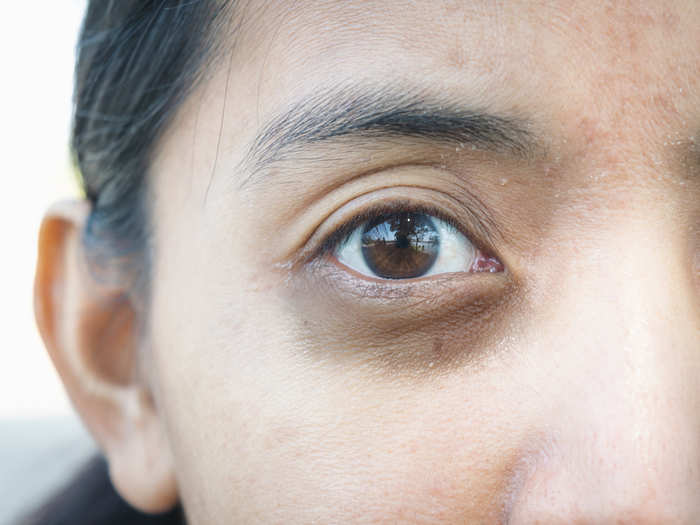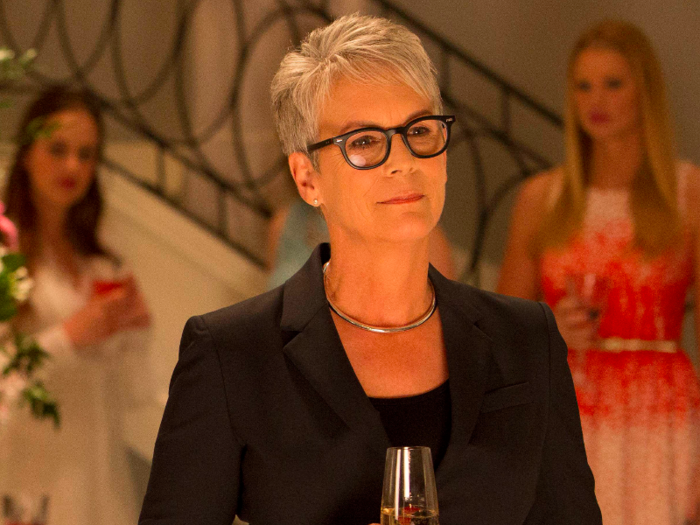2. Dark circles will appear beneath your eyes in your 30s, but you can minimize them with targeted ointments.
Myth: Dark under-eye circles show up in your 30s, but you can prevent them with targeted, vitamin-packed under-eye creams.
Why it's bogus: "Periorbital dark circles," as they are known scientifically, are caused by a variety of factors, of which aging is only one. Everything from your genes to how tired you are can influence the appearance of these areas, as a 2016 review published in The Journal of Clinical and Aesthetic Dermatology found.
The reason aging can contribute to under-eye circles is because skin gets thinner over time, and the area just beneath the eyes is thinner than the skin on other parts of your face. This makes the blood vessels beneath more visible, resulting in a grey or purplish hue.
3. To avoid the grey hairs of your 40s, keep stress levels low.
The myth: Most people start to see grey hairs in their 40s, and the chief cause is stress.
Why it's bogus: Genetic factors — not environmental ones — appear to play the strongest role in determining when your hair begins to lose its color.
"For the vast majority of people, greying hair is not down to something you have done, but to genetic factors beyond your control," Nina Goad of the British Association of Dermatologists told the BBC.
Still, while some limited studies in mice have suggested a link between stress and the appearance of grey hairs, there is little evidence that this is the case in humans, University of Melbourne professor of dermatology Rodney Sinclair points out in The Conversation.
4. By age 50, half of the population will have lost the color in 50% of their hair.
The myth: Many people refer to what's known as the "50/50/50 rule," which states that by the time we turn 50, half of us will have lost the color in half of our hair.
Why it's bogus: The only large study to test the rule was funded by the cosmetic company L'Oreal. And even that paper concluded that the percentage of people globally who had lost the color in 50% of their hair by age 50 was between 6% and 23%, or "well below that expressed by the ‘50’ rule of thumb."
5. If you have too many wrinkles in your 60s, it's because your skin is unhealthy.
Myth: If you have a lot wrinkles in your 60s, it's a sign your skin is unhealthy.
Why it's bogus: After age 20, the average person produces about 1% less skin collagen, the main structural protein in our bodies. Collagen helps keep skin supple, hence the appearance of wrinkles when there's less of it. Fine lines do not mean there is something wrong with your skin.
"Under a microscope a biopsy of a wrinkle exhibits no telltale signs that reveal it to be a wrinkle," Suzan Obagi, assistant professor in dermatology at the University of Pittsburgh and director of the Cosmetic Surgery and Skin Health Center, told Scientific American.
Put another way, there's nothing negative happening on a microscopic level that is making your skin look wrinkly. It's merely a combination of several factors, including age, fatigue, and genetics.




